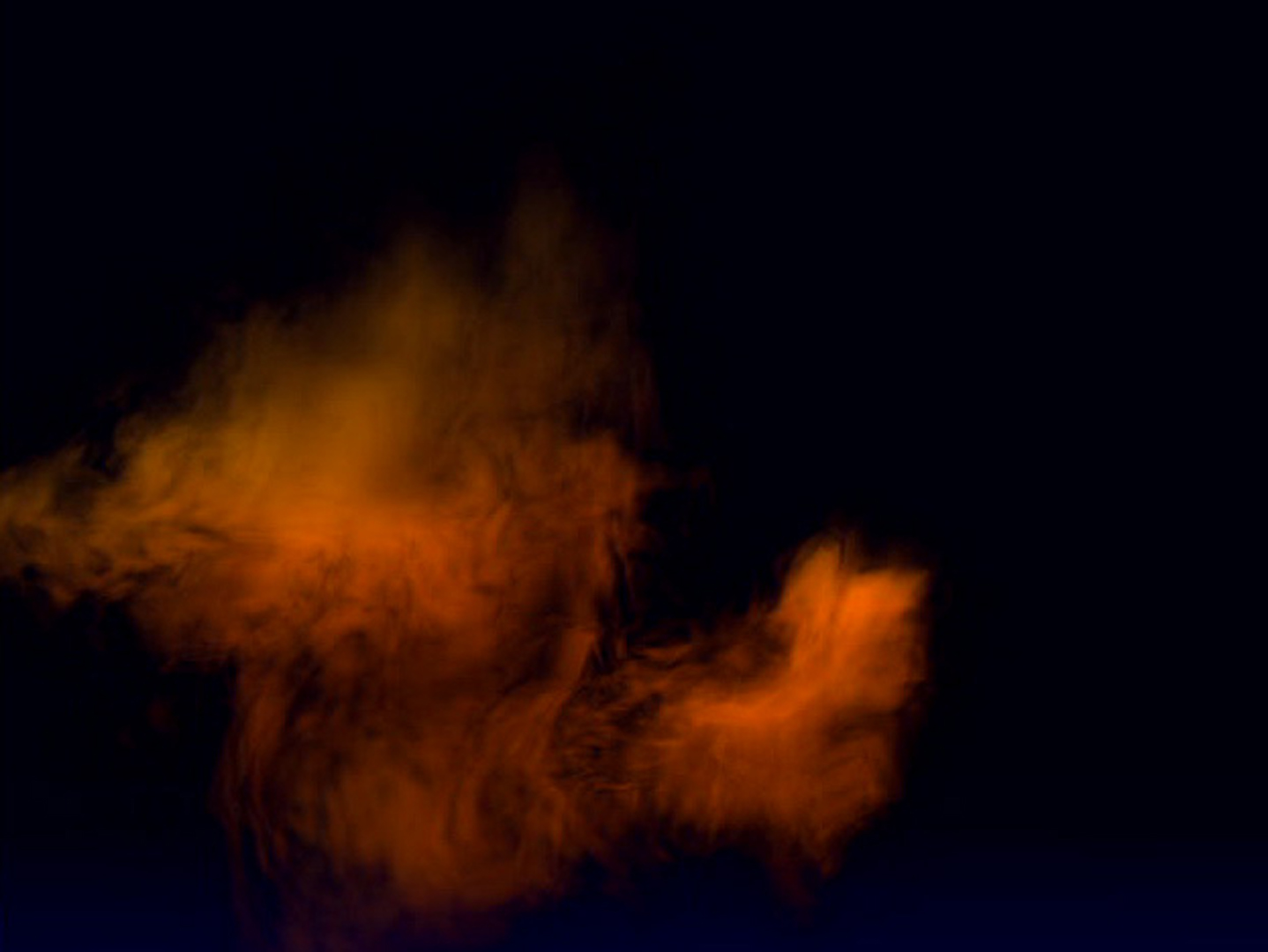“Stable fluids” by Stam
Conference:
Type(s):
Title:
- Stable fluids
Presenter(s)/Author(s):
Abstract:
Building animation tools for fluid-like motions is an important and challenging problem with many applications in computer graphics. The use of physics-based models for fluid flow can greatly assist in creating such tools. Physical models, unlike key frame or procedural based techniques, permit an animator to almost effortlessly create interesting, swirling fluid-like behaviors. Also, the interaction of flows with objects and virtual forces is handled elegantly. Until recently, it was believed that physical fluid models were too expensive to allow real-time interaction. This was largely due to the fact that previous models used unstable schemes to solve the physical equations governing a fluid. In this paper, for the first time, we propose an unconditionally stable model which still produces complex fluid-like flows. As well, our method is very easy to implement. The stability of our model allows us to take larger time steps and therefore achieve faster simulations. We have used our model in conjuction with advecting solid textures to create many fluid-like animations interactively in two- and three-dimensions.
References:
1. M. B. Abbott. Computational Fluid Dynamics: An Introduction for Engineers. Wiley, New York, 1989.
2. J. X. Chen, N. da Vittoria Lobo, C. E. Hughes, and J. M. Moshell. Real-Time Fluid Simulation in a Dynamic Virtual Environment. IEEE Computer Graphics and Applications, pages 52-61, May-June 1997.
3. A. J. Chorin and J. E. Marsden. A Mathematical Introduction to Fluid Mechanics. Springer-Verlag. Texts in Applied Mathematics 4. Second Edition., New York, 1990.
4. D. Ebert, K. Musgrave, D. Peachy, K. Perlin, and S. Worley. Texturing and Modeling: A Procedural Approach. AP Professional, 1994.
5. D. S. Ebert, W. E. Carlson, and R. E. Parent. Solid Spaces and Inverse Particle Systems for Controlling the Animation of Gases and Fluids. The Visual Computer, 10:471-483, 1994.
6. N. Foster and D. Metaxas. Realistic Animation of Liquids. Graphical Models and Image Processing, 58(5):471- 483, 1996.
7. N. Foster and D. Metaxas. Modeling the Motion of a Hot, Turbulent Gas. In Computer Graphics Proceedings, Annual Conference Series, 1997, pages 181-188, August 1997.
8. M. N. Gamito, E F. Lopes, and M. R. Gomes. Twodimensional Simulation of Gaseous Phenomena Using Vortex Particles. In Proceedings of the 6th Eurographics Workshop on Computer Animation and Simulation, pages 3-15. Springer-Verlag, 1995.
9. M. Griebel, T. Dornseifer, and T. Neunhoeffer. Numerical Simulation in Fluid Dynamics: A Practical Introduction. SIAM, Philadelphia, 1998.
10. W. Hackbusch. Multi-grid Methods and Applications. Springer Verlag, Berlin, 1985.
11. F. H. Harlow and J. E. Welch. Numerical Calculation of Time-Dependent Viscous Incompressible Flow of Fluid with Free Surface. The Physics of Fluids, 8:2182-2189, December 1965.
12. M. Kass and G. Miller. Rapid, Stable Fluid Dynamics for Computer Graphics. ACM Computer Graphics (SIGGRAPH ’90), 24(4):49-57, August 1990.
13. N. Max, R. Crawfis, and D. Williams. Visualizing Wind Velocities by Advecting Cloud Textures. In Proceedings of Visualization ’92, pages 179-183, Los Alamitos CA, October 1992. IEEE CS Press.
14. W.H. Press, B. E Flannery, S. A. Teukolsky, and W. T. Vetterling. Numerical Recipes in C. The Art of Scientific Computing. Cambridge University Press, Cambridge, 1988.
15. W. T. Reeves. Particle Systems. A Technique for Modeling a Class of Fuzzy Objects. ACM Computer Graphics (SIG- GRAPH ’83), 17(3):359-376, July 1983.
16. M. Shinya and A. Fournier. Stochastic Motion – Motion Under the Influence of Wind. In Proceedings of Eurographics ’92, pages 119-128, September 1992.
17. K. Sims. Particle Animation and Rendering Using Data Parallel Computation. ACM Computer Graphics (SIGGRAPH ’90), 24(4):405-413, August 1990.
18. K. Sims. Choreographed Image Flow. The Journal Of Visualization And Computer Animation, 3:31-43, 1992.
19. J. Stare. A General Animation Framework for Gaseous Phenomena. ERCIM Research Report, R047, January 1997. http ://www.ercim.org/publications/technical_reports/047-abstract.html.
20. J. Stare and E. Fiume. Turbulent Wind Fields for Gaseous Phenomena. In Proceedings of SIGGRAPH ’93, pages 369- 376. Addison-Wesley Publishing Company, August 1993.
21. J. Stare and E. Fiume. Depicting Fire and Other Gaseous Phenomena Using Diffusion Processes. In Proceedings of SIGGRAPH ’95, pages 129-136. Addison-Wesley Publishing Company, August 1995.
22. E N. Swarztrauber and R. A. Sweet. Efficient Fortran Subprograms for the Solution of Separable Elliptic Partial Differential Equations. ACM Transactions on Mathematical Software, 5(3):352-364, September 1979.
23. J. Wejchert and D. Haumann. Animation Aerodynamics. ACM Computer Graphics (SIGGRAPH ’91), 25(4):19-22, July 1991.
24. L. Yaeger and C. Upson. Combining Physical and Visual Simulation. Creation of the Planet Jupiter for the Film 2010. ACM Computer Graphics (SIGGRAPH ’86), 20(4):85-93, August 1986.





